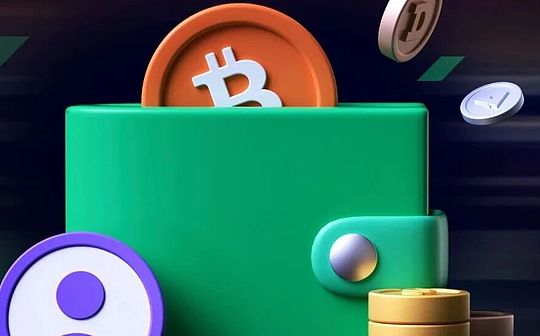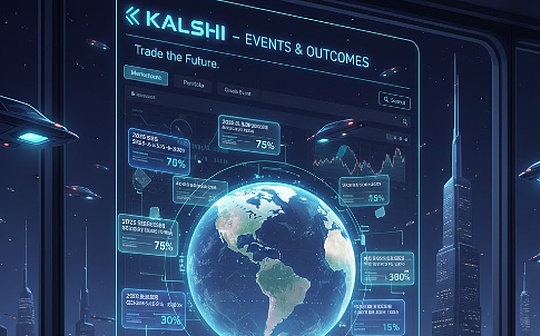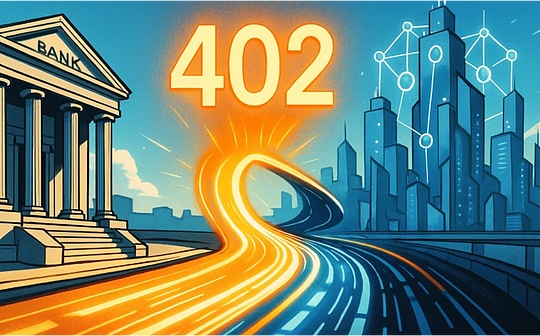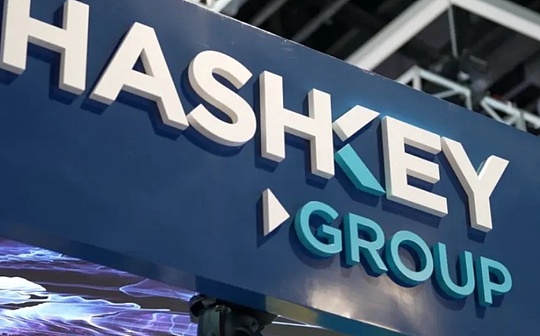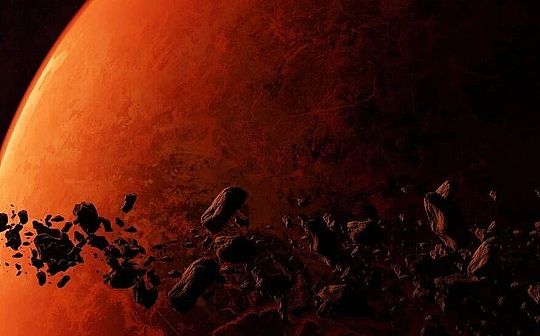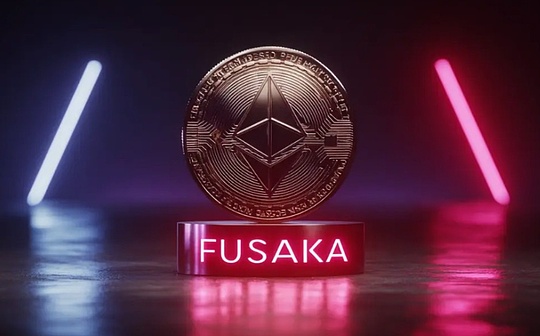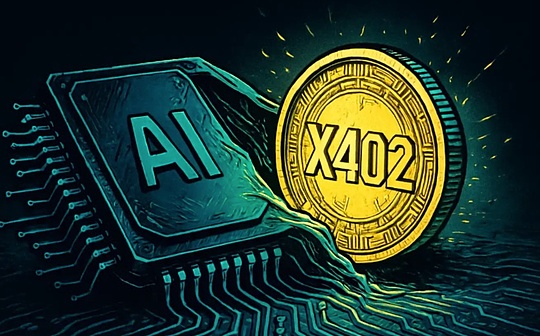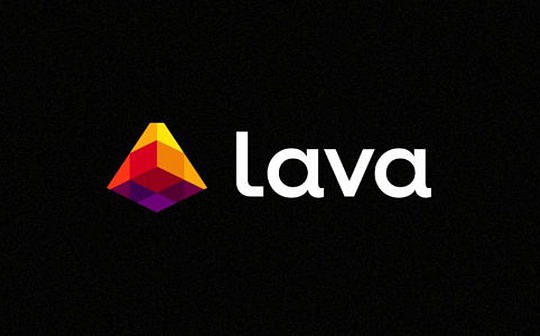
Author: DEWHALES Source: Dewhales Capital Translation: Shan Oba, Bitchain Visiting Realm
Dewhales pointed out in recent research that the project has recently developed in the real modular direction similar to Web2.In the past ten years of Web2, the number of external libraries, frameworks and containers has exploded.In the past, modules in Web3 could be compared to difficult to integrate frameworks, and temporary solutions were required to combine them together.Now, it is more similar to Web2 with libraries, and a program can call many different libraries.In Web2, the richness of the library usually causes the application size to swell significantly. Under the ideal situation of a bank application, it should be 20-50 MB, but due to library reasons, it may eventually reach 500-800 MB.However, in Web3, the current situation is slightly different.
Web3 is gradually getting rid of the Fat Protocols paradigm provided by developers with a large number of SDK.These comprehensive products usually cause developers to obtain “a little bit”, rather than a tool with real extensive functions.In addition, from the trend of the past few years, the pendulum of cryptocurrencies shot from a centralized solution to a decentralized solution. Due to the expansion of the web3 development function, the current main development direction is truly decentralized.Lava Network is one of the foundation of the foundation for the real distributed and decentralized Web3.
2. Lava Network Introduction
In order to have an overall understanding of LAVA and its goals, please consider the following analogy:
-
LAVA is a postal systemAnd other providers are independent postman.If there is only one postman in a city, they may be sick, causing no one to submit emails.If there are many postman from different companies, it will produce competition, and it is difficult for consumers to choose a specific postman.In LAVA, anyone can join the “LAVA” postman collective and submit emails in any way -cycling, driving or walking.You only need to pay a fee, and the LAVA algorithm will choose the best postman according to your needs to help you send a letter.You don’t have to choose your own postman or maintain a relationship with multiple different providers at the same time.
-
Lava is a marketAnd other providers are individual stores.At present, in Web3, there is no infrastructure aggregation service. With the launch of the new blockchain and combination, the part of the stack has become more and more scattered.For each Rollup deployment on Celestia, developers must use new providers or set a node to use it.LAVA eliminates the needs of developers to manually select single providers.When developers connect their applications to Lava, the protocol will not only connect them to the most effective node that can be used to obtain response, but also their request routes to the correct provider -through the chain, protocol and API interface.
3. Overview of LAVA network and RPC
The LAVA agreement aims to provide decentralized and scalable blockchain data access.LAVA is a fast, reliable and decentralized RPC network suitable for all blockchain. It solves the inherent problem of centralized blockchain data providers (INFURA, Alchemy, etc.).In addition, there are incentive pools on LAVA, which can create these incentive pools to guide infrastructure development.This is used to pay the provider, and users/developers can get RPCs for free.Learn more information about the shortcomings of the current solution in the “competitors” section.In addition, the team also emphasizes that Lava will support more functions and modules in the future.
At present, the first service module on LAVA is RPC, which supports more than 30 chains.In the future, modules such as sub -diagrams, prophecy machines, and anti -MEV APIs can be added without authority.
>
-
What is RPC:RPC (remote process call) is a method that allows programs to call a process (function) in another program.In the blockchain environment, they are complete nodes that are convenient for other network participants to connect to the blockchain for reading/write access.RPC nodes are usually used by those who do not or cannot run their own nodes or light clients, which greatly reduces friction when accessing the blockchain.Any user connected to the RPC provider hidden the integrity of the provider because there was no self -inspection work.
-
The purpose of RPC:Users need to use RPC to connect to any blockchain and perform any basic operations: casting, transactions, transactions, transactions, sending, and deploying smart contracts.For DApps, RPC allows DAPPS to interact with any blockchain network.For example, DAPP can use RPC to send transactions, read data from the blockchain (GAS price, account balance, etc.), or to subscribe to some events on the network.RPC also allows DAPPS to interact with the blockchain network without disclosing its private key.
>
On the one hand, Lava’s description seems to be similar to things like routers or relays.But in fact, LAVA as RPC has penetrated into all aspects and components of Web3: different processes that different ISPs, services, DAPPs, and many users are invisible.So we need to study exactly how Lava works in depth.
>
4. Lava and lava SDK general working principles
1. CHAINS and ROLLUP have created a incentive pool on Lava, consisting of its native token or stablecoin or even Memecoin
2. Chains and Rollup define the required infrastructure services by writing simple specifications (“SPECS”), and add it to LAVA so that providers can provide services to infrastructure services to provide services
3. Suppliers join LAVA to provide services for standardized infrastructure and get rewards from the incentive pool.This is particularly beneficial to the newly launched or pre -pushed chain supported by a few major suppliers
4. LAVA aggregate provider, and in the best way to rout requests according to geographical location and provider’s service quality.Users do not need to manually study and select the best provider; LAVA can dynamically meet user needs in accordance with each request
5. Users and developers get free infrastructure
6. The monthly return of the supplier depends on the computing power and service quality they provide
7. Developers can purchase subscriptions for higher speed restrictions (such as more RPC requests).The subscription fee is also paid to the provider on a monthly basis.
>
The problem of data providers on the current chain is that such solutions are very scattered, and none of them can provide all functions in one stop -each provider lacks certain functions or support for specific networks.Therefore, multiple solutions need to be used to cover the necessary data stacks at the same time.LAVA also emphasizes the problem of centralized infrastructure failure.
LAVA serves as a market and settlement layer to access blockchain data with dynamic market -driven pricing.Payment settlement, conflict resolution and pairing are completed on the chain.To ensure competitiveness, communicate directly between suppliers and consumers, and be offline (that is, not through the LAVA network).Lava aims to allow users not only to access RPCs, but also access RPCs from different locations around the world to get better speed and user experience.
Technically, LAVA provides a POS blockchain solution, which is developed by COSMOS SDK and TENDERMINT kernels.In the context of COSMOS is positioned as a hub that allows different networks to connect with each other, this looks logical.But this triggers a problem, that is, COSMOS is actually a very expensive solution that connects different networks through IBC technology.The fact is that the current IBC transfer layer requires a pair of lightweight clients between each chain.In most EVM -based chains, the cost of running a complete lightweight client is too high, which limits IBC’s access to high bandwidth and low -cost chains.Verification requirements are the standard requirements for COSMOS:
>
The single page focuses on COSMOS, but in fact, if we visit Gateway Lava, we will see a lot of supported chains (including some chains that provide RPC in the test network).As of mid -June, only 16 chains are available; as of July 7, 24 chains are available:
>
LAVA also provides SDK, which is a powerful JavaScript/TypeScript library designed for developers. It allows developers to integrate and play and play RPC multi -chains by adding a simple JS library to the code.It provides decentralized access to all chains supported by Lava ecosystems and can be used in the server and browser environment.By importing Lava-SDK into their projects, developers can easily interact with different blockchain and create decentralized applications.
Tools provided by lava:
-
Gateway-A easy -to -access Web UI, for online project management and all support chains and API -based API -based visits.
-
SDK with badge server and integrated SDKSDK with an innovative badge system is used to hide and protect the private key to hide and protect the front -end DAPP.SDK also supports this machine integration with VIEM, Web3.js, Ethers.js, COSMJS and so on.
-
Server kit-The binary files of concurrent and high throughput can be used to build a gateway or provide services to multiple consumers in the enterprise environment.
5. Design and architecture of lava network
Now let’s take a look at the benefits of lava decentralized design:
-
Consensus -based data accuracy.The client uses a free threshold algorithm to sample the API endpoint and minimize the response conflict in a probability.Consensus is built around the data in the network. In the future, a simple client is planned to further eliminate the assumptions of trust.Developers do not have to worry about data outdated or inaccurate.
-
Network redundancy can be expanded with the peak of traffic-The application interacts with the list of providers, thereby increasing normal operation time and service coverage.The network can also quickly run its RPC node to connect with providers and provide services to create new LAVA Network specifications.
-
Connect to many providers = high normal operation time-An the pairing of customers and providers, and rated in the equivalent system based on delay, freshness and availability to determine the provider’s reward.The provider gets award based on the Qos of each session, which means that users can get the best experience without stopping time.
-
Can support the norms of any chain and any API-Ava as a provider, developers can change their configuration to access any chain and any API currently provided by the network.DAO and contributors can use open source to quickly realize new support for the Internet, so developers do not need to spend time to find new providers that meet their needs.All RPCs needed by developers can be obtained through an open source protocol.
Lava Network Summary:
>
But if we do not look at the hood through the small glass window, we can only see a part of the engine, but to open the hood -everything will look bigger and more complicated:
>
LAVA network participant:
-
VerificationThe protective chain and earn LAVA through the protection chain.The verified node is responsible for protecting the LAVA blockchain by providing blocks and voting and verification status of blocks.The formation of the verifications will be discussed further in the “tokens” section.
-
CommissionerLava pledged LAVA to providers and verifications on the Internet.This makes the network more secure and allows the client to share the risks of the provider and verifications in exchange for rewards
-
Provider for consumers management servicesEssenceThe provider meets the RPC nodes in the network and the re -transmission chain of consumer requests to meet the re -transmission requests (such as COSMOS, Etherium, OSMOSIS, Polygon, etc.).In many cases (but not all), the provider will also be the node operator of a specific blockchain.They get service requests from consumers in the form of LAVA.According to the performance of RPC services, suppliers may get rewards, punishment or excluded from the chain.However, opposite to the verificationrs, the provider’s reward comes from:
1)Subscription and payment from serving consumers,
2)IPRPC reward for service IPRPC -as mentioned above, in the IPRPC pool
3)Entrust reward -as described in the pledged below
4)Reward increase
The provider pays comes from CU and pays LAVA.Each provider receives part of the subscription price of consumers.The share received by the order is obtained by the total number of CU provided by the provider for the CU provided by the consumer.This gives an accurate percentage of service CU belonging to related providers. -
championLava is obtained by creating, maintenance, service and support specifications on the LAVA network.Many championship creation specifications and proposed them on the chain, based on necessary updates or changes to maintain existing specifications, or write software that serves specifications (node clients, API clients/indexes, or other innovations).Some rewards are retained for the champion.
-
consumerAnyone who uses the LAVA protocol to use the web3 API.Examples include developers, wallets, DAPPs, exchanges, indexes, etc.They use lavasdk, IPRPC endpoints, gateway endpoints or server kits to retrieve data.Consumers initiate a Chinese relay request.They interact with relay chains and participate in the LAVA network for reliable RPC calls.Lava promotes decentralized interaction with the blockchain, enabling consumers to maximize privacy, transaction speed, data reliability, review and node availability.Consumers on the LAVA network are divided into developers and applications they created.
-
You can use corporate clients of Lava Server Kit-This is a GO language reference implementation that provides a self -supporting management gateway to the blockchain API, aiming to be a solution for the back -end server operation.It can accept the original RPC query, pack it with the protocol layer, and send it directly to the provider on the network in a decentralized manner.Lava Server Kit is more concurrent than Lava SDK and has higher performance. Enterprises -level applications that can be used for high throughput and high extension efficiency.
-
specificationIt is a basic component for LAVA with multi -chain support, presented in JSON format.These so -called specifications define the minimum requirements required to effectively run the specific chain on LAVA.Using these specifications, LAVA determines the support chain and methods, and sets up corresponding costs, prerequisites and inspections.
-
Lava gatewayIt is a web platform for developers who can access blockchain data in real time.The gateway uses Lava Server Kit to provide the entry point for developers who need to perform RPC through the LAVA network.This setting allows users to use convenient control management and custom web3 API directly from the browser.
6. lava network pledge
The topic of pledge has been hung in everyone’s mouth for a long time, but as far as LAVA is concerned, it has shifted from an unexpected direction to a more complicated way.But as far as LAVA is concerned, this method is different from the re -pledge of the usual LST and AVS native currency.By re -pledge in Lava Network, token holders can entrust their tokens to provides the specifications provided by providers to obtain part of the reward for the selection provider.All the pledges are qualified to obtain some of the profits of the provider.
LAVA entrusts the verification person to pledge again.LAVA tokens can be pledged to the provider, instead of introducing additional mortgages, so as to get more returns at a higher risk.Instead, whenever the dealer pledges the tokens, the equal amount of tokens will be pledged to the verifications.In other words, the provider pledge is both self -commission (entrustment to yourself as a provider) and a standard entrustment (entrusted to the verification).
>
The purpose of pledge:
-Su a way to help the client to help choose the best provider and get rewards
-Sely provide additional benefits for the verificationist client
-Recent the security cost of the network
7. Competitive rival pattern
In fact, there are many RPC providers -according to Alchemy’s data, there are 29.Mainly Infura, QuickNode, Alchemy.But compared with them, Lava Network provides completely different products.
What are the disadvantages of centralized RPC providers:
-
Wallets can review the country, and the provider can prevent some DAPP transactionsThe gateway can return inaccurate data, sometimes even malicious.
-
>>>>>>>>>>>>>>Because there are errors when testing the network earlier this year, SOLANA Foundation RPC endpoint is offline.Although this will not affect the ability of the network to create new blocks, this means that users must rely entirely on private RPC providers, and public RPCs are no longer available.
-
RPC provider often face disaster configuration issuesFor example, the providers in the LedgerWatch Ericon project have recently encountered problems. Their endpoint fails, and the HTTP endpoint URL is permanently closed, as recorded in the project log.
-
>Optimsim airdrop shows,Due to the premium traffic that caused its public RPC overload, the failure of the airdrop caused the token value of 60%.
In addition, large providers provide services to a few chains.LAVA allows any chain to provide fast and reliable RPCs for its users/developers.By incentive pool (motivated public RPC).In addition, the RPC endpoint may be offline at high loads, and centralized providers do not assume responsibility -this is also one aspect of the GTM strategy Lava Network.

In other words, we see that many parameters are quite different.And it is still worth understanding the performance of Lava.The feedback shows that because other RPCs do not have a stop time, using RPC LAVA can increase application performance by about 10 times, even on Arbitrum.The team said that -generally -CU/price is defined by the ecosystem. Due to the novelty of SPECs, LAVA will be able to provide unlimited number of CU/prices -according to the definition of supply and demand.
From different perspectives, another competitor may be Eigenlayer.This is not only because of the use of re -pledge (despite different angles), but also because of the structure and principles of the agreement.The problem is that although Eigenlayer supports network guidance (AVS), Lava Network provides guidance to create its own RPC infrastructure through a mechanism called incentive public RPC.It is similar to Eigenlayer using LSTH and native ETH to expand the security of encrypted economic security. In Lava Network, chain and summary have created an incentive pool consisting of their own tokens, stable coins, and even MEME coins on LAVA.
8. LAVA token economics
LAVA tokens have direct utility through the subscription model and pledge provider node (specification) to ensure the integrity and continuity of their services.In addition, the authentication of Lava Network will pledge tokens.Token holders can entrust their tokens to providers and verifications and participate in governance.
There are other aspects of the formation of funds: the chain contributes to Lava incentive tokens, reward providers and pledges provide specifications for their developers and users, and developers (champions) can create, develop and maintain RPC and API specifications and software through the creation, development and maintenance of RPC and API specifications and softwareGet award.
In addition, LAVA tokens are an indispensable part of the agreement expansion.This is because it is used to motivate the public RPC pool, and tokens from other platforms for LAVA RPC can also be used with LAVA tokens.IPRPC pool can accommodate native LAVA tokens (LAVA) and IBC packaging tokens from any blockchain.
For access and connection, the incentive pool relies on server kit/gateway interface.Consumers with special subscriptions as sponsor as end users.These special subscriptions enable consumers to allocate rewards in the iPRPC pool when the end users use data to the provider.Therefore, the rewards obtained by providers serving the IPRPC specifications exceed the conventional network service awards.

Like other blockchain, verificationrs are rewarded by pledge.The authentication of the pledged pledge received from four sources:
1) Block rewards from reward reserves
2) Block rewards from subscribing commissions
3) Block costs from online transactions
4) Entrust reward (as described in the “re -pledge part)

LAVA’s supply is fixed and will not cast more albums.In addition, LAVA has developed a new currency tightening mechanism to attract providers in the initial stage of the main network.6.6% of the supply is distributed to “Provider Drops”, which is a monthly reward distribution mechanism to motivate providers to participate.The monthly award is different according to the payment demand of the service on LAVA; the higher the payment demand, the greater the reward obtained by the provider you who join in the early days.As the network attracts more consumers, the demand for Drops will be reduced, because the provider will benefit from subscribing to payment.
At the end of each month, all uniplied verifications are burned.

LAVA will have 1,000,000,000 tokes when genesis, without inflation.

25% -public allocation, Future Plan and Reward Reserve (provider airdrop and authentication reward).Unlocked completely at the time of release.Except for reward reserves: From the release to the fourth year, unlocked.
31% -R & D and ecosystem, Agreement for maintenance and development; plans for providers, verifications and champions.25% were unlocked at the time of release.The remaining 75% unlocked continuously from the first to the fourth year.
17% -investor33% were unlocked in the first year.The remaining 67% unlocked continuously from the first to the third year.
27% -contributors, early contributors, core teams, consultants, etc.33% Unlocked in the first year.The remaining 67% unlocked continuously from the first to the third year.

9. github
GithubVery active, and can even be regarded as a role model for real active github.In this study, we want to emphasize the activities in the Lava Network repository alone, because this clearly shows a large number of activities in the project work, especially the dynamics since July 2023.
https://github.com/lavnet/lava-It is the main repository.44 contributors (as of 23 as of July 2023) worked on the repository and used GO as the main language, as well as shell, Phyton and other languages.Since June 2022, the frequency of submission is very high. All Pull requests are in the case, and the activity is not artificial.The new version is very active. The first version was in November 2022. In less than 1.5 years, 115 versions have been released (as of 33 as of July 2023). This is a very good number:

At present, there is an unreasonable problem, the title of contribution -the provider rewards durability when it is closed.The existence of the problem shows that the defender responds to the problem rapidly and actively strives to solve them.As far as the code is concerned, the repository looks good, and the code is written using well -known tools and libraries.
>https://github.com/lavnet/lava/tree/ecosystem/lava-sdk-Ava SDK repository is also quite active. This repository has fewer contributors (6) and the submission rate is low, but it is still much higher than most of the encrypted projects in the main storage reservoir (as of July 2023This repository is currently included in the main LAVA repository).SDK (Software Development Tool Pack) aims to allow developers to access Web3 API through LAVA networks.It is implemented with JavaScript/TypeScript, which aims to run in the browser and provide multi -chain point -to -point access to the blockchain API.
https://github.com/lavnet/docs-The document storage is also actively updated and has a large number of contributors (as of the end of May 2024, 43 43 people, as of the end of July 2023):


10. Supporters and integration
LAVA also announced the supporters of 2024 rounds of financing, including: Haskey, Tribe Capital, JUMP, Quiet, Node.Capital, Finality, MH Ventures, Alpha Lab, Chorus One, YTwo, Kommune, Protocol La BS, Alliance, Kepler, Dispersion Capital, ChainLayer, Compa, Galileo, Anagram, Caladan, Dispersion Capital, and Interop Ventures.
LAVA Foundation has raised $ 11 million, Used to develop LAVA ecosystems and funding agreement development.also,>LAVA also completed a $ 15 million seed round financing,The leaders are Trige, JUMP and Hashkey.
In addition, LAVA has cooperated with Near, EVMOS and Axlar to carry out incentive RPC activities, and distributed hundreds of thousands of rewards in the form of node operator awards to provide reliable infrastructure.Other partners include (or projects using LAVA):
-
Learn web3Dao-The educational projects and held a practical seminar on LAVA SDK for developers.
-
Apart fromLearn web3DaoLava also gave a speech at Solana Hacker House, which is positioned as an environment for developers and learning.
-
Caddi-Bly using LAVA, CADDI users can get more accurate GAS prices across multiple networks.CADDI allows optimized exchange pricing, and in addition to DEX, it is also allowed to connect to the centralized exchange via API.But from the available social media indicators, this application is not very popular.
-
ZyberswapIt is a DEX on Arbitrum. It is planned to further launch on Optimism and ZKSYNK. According to DEFILAMA data, its TVL size is small to $ 4.18 million.
-
Arcadeum-On online casino, its website provides a lot of different gambling games.
-
Chorus one ———Provide users with Stake-As-A-Service (SaaS) solutions when launching the lava core network.
Another uniqueness of LAVA in establishing a partnership is that the incentive public RPC activity was launched.Specifically, in this event, LAVA cooperated with Union Labs to encourage public remote process calls (IPRPC), and has a token reward pool worth $ 100,000.Union Labs is an independent compatibility layer. It uses zero -knowledge to prove a security bridge to connect any application chain, L1 and L2.After the start of the UNION main network in 2024, node operators will have the opportunity to become a UNION RPC provider through LAVA, and simplify the process of developers by integrating the provider to a single access point.Participants will get part of the reward pool within three months after the expected first release date.
In addition, Axlar’s community forum mentioned Axlar’s participation in the plan.Their incentive public RPC endpoint has become the main RPC on Axlar.At the time of release, Axlar’s main network and test network had processed more than 7 billion RPC requests, and distributed more than 31,000 AXL tokens among high -quality Axlar node operators.It also adds support for archived data and COSMWASM API, which has significantly improved performance through enhanced caching function.In April, Axlar’s CU has reached 11.4 billion computing units, which shows the direct use and demand for Lava RPC.

